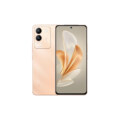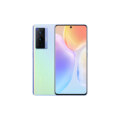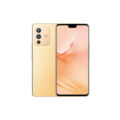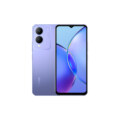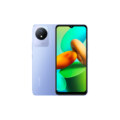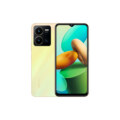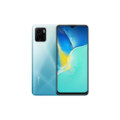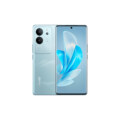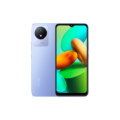Vivo Y100
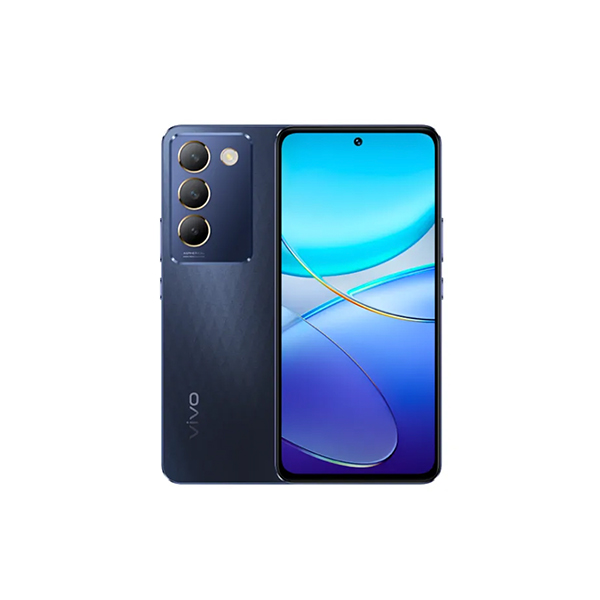

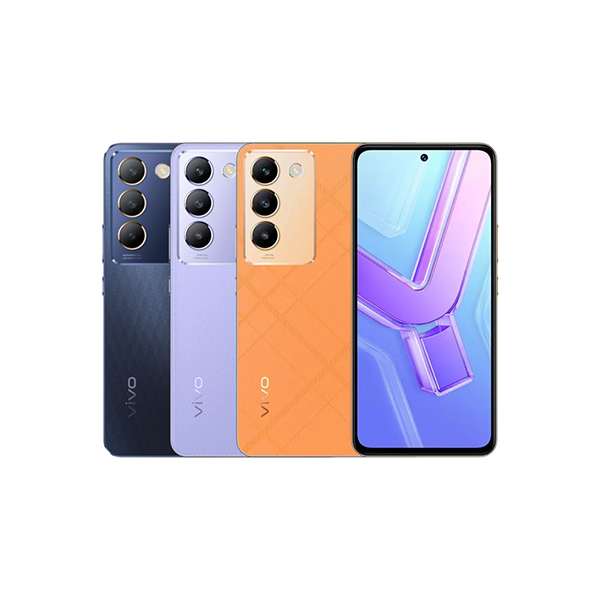
Specs
General
| Device Type | Vivo Phone |
| Announced | 16 February, 2024 |
| Released | 18 February, 2024 |
| Status | Available |
Design
| Water Resistant | IP54, dust and splash resistant |
| Dimensions | 158.9 x 73.5 x 7.7 mm |
| Weight | 181 g |
| Protection | Glass front, glass back |
| Colors | Metal Black, Twilight Gold, Pacific Blue |
Display
| Refresh Rate | 120 Hz |
| Display Type Display Technology => A number of display technologies and types used in mobile phones => TFT (Thin Film Transistor), IPS (In-Place Switching), OLED (Organic Light Emitting Diode), AMOLED (Active-Matrix Organic Light-Emitting Diode), Super AMOLED (an even advanced version of AMOLED), Resistive Touchscreen (Resistive touchscreens contain two layer of conductive material with a very small gap between them which acts as a resistance), Capacitive Touchsceen (Capacitive touchscreen technology consists of a layer of glass coated with a transparent conductor) | AMOLED |
| Size | 6.67 inches |
| Resolution | 1080 x 2400 pixels |
| Display Colors Display Colors is refers to the number of different shades of colors that the screen is capable of displaying => 64K colors, 256K colors and 16 million colors, Obviously 16M is highest available range of colors and better than others. | 16M Colors |
| Pixel Density Pixel Density (PPI) is refers to the concentration of pixels on a particular display, measured in pixels per inch (ppi). Pixel density is calculated by dividing the diagonal pixel resolution of a display by its diagonal size, higher pixel density better display quality. | ~ 395 ppi |
| Touch Screen | Capacitive Touchscreen, Multitouch |
| Features | Always-on display, 1800 nits (peak) |
| Secondary Display | No |
Camera
| Front Camera | 8 MP, f/2.0, (wide) |
| Camera Setup | Double |
| Main Camera Camera is able to capture photographs and usually videos, The most important characteristics of a camera are the resolution (measured in megapixels), lens focus type (fixed or automatic), higher megapixel cameras are known to capture higher quality photos, but not always a good measurement of the photos quality. |
50 MP, f/1.8, (wide), PDAF 2 MP, f/2.4, (depth) |
| Video | 1080p@30fps |
| Camera Features | Panorama, HDR |
| Flash Flash Light => There is commonly two types of flash lights are used in camera mobile phones, LED Flash (LED flash offers lower power consumption with drive circuitry that takes up very little room, LEDs can be strobed faster than any other light source), Xenon Flash (xenon flash produces an extremely intense full-spectrum white light for a very short duration) | LED flash |
Hardware
| Operating System OS => Every computer system run on a base software called Operating System (OS). Operating System controls all basic operations of the computer (such as smartphone, PDAs, tablet computers and other handheld devices). The Operating System allows the user to install and run third party applications (apps), apps are used to add new functionality to the device. | Android 14 |
| Chipset Chipset is a group of integrated circuits designed to perform one or a more dedicated functions, often with real time computing constraints, Popular smartphones are equipped with more advanced embedded chipsets that can do many different tasks depending on their programming. | Qualcomm Snapdragon 685 |
| CPU CPU (Central Processing Unit) mostly known as processors, CPU processes instructions in order to carry out certain functions that make your device operate properly. Processors are often described as the brain of computers, smartphones and tablets, Smartphones and tablets rely on processors to carry out their every task, Processors are an incredibly important factor in selecting any type of computing device, including your smartphone. | Octa-core (4x2.8 GHz Cortex-A73 & 4x1.9 GHz Cortex-A53) |
| Architecture | 64 bit |
| Fabrication | 6 nm |
| GPU GPU (Graphics Processing Unit) is a single-chip processor designed to rapidly manipulate and alter memory to accelerate the creation of images in a frame buffer intended for output to a display, This includes things such as lighting effects, object transformations, and 3D motion. | Adreno 610 |
| RAM (Memory) RAM (Random Access Memory) is a type of computer memory that can be accessed randomly, any byte of memory can be accessed without touching the preceding bytes that allows information to be stored and accessed quickly from random locations. RAM is the most common type of memory found in computer systems, smartphones, tablets and other electronic devices. | 8 GB |
| Internal Storage Internal Storage is a data storage space (flash memory) mostly used in smartphones, tablets and other electronic devices where operating system, apps, music, photos, videos, files and other user data Is stored. | 128GB Built-in |
| Card Slot Memory Card Slot is a special slot for inserting a memory card. Memory cards allow you to expand the phone's built-in memory, A memory card (sometimes called a flash memory card or a storage card) is a small storage medium used to store data such as text, pictures, audio, and video, for use on small, portable or remote computing devices such as mobile phones, mp3 players, digital cameras. | |
| Sensors Sensors are electronic components that detects and responds to some type of input from the physical environment. The specific input could be light, heat, motion, moisture, pressure and location, The output is generally a signal that is converted to use in computing systems, a location sensor, such as a GPS receiver is able to detect current location of your electronic device. | Fingerprint (under display, optical), accelerometer, gyro, proximity, compass |
Network
| SIM TYPE SIM (Subscriber Identity Module) is a small card that contains mobile network subscriber's account information. This allows the phone using the card to attach to a mobile network. The SIM card is most commonly associated with GSM and UMTS mobile networks. Moving a SIM card from one phone to another allows a subscriber to switch mobile phones without having to contact their mobile network carrier. SIM cards can also be used by a phone to store limited amounts of data, such as phone numbers and text messages. | Nano SIM |
| SIM Technology | Dual Sim, Dual Standby (Nano-SIM) |
| 2G Network | GSM 850 / 900 / 1800 / 1900 |
| 3G Network | HSDPA 850 / 900 / 1700(AWS) / 1900 / 2100 |
| 4G Network | LTE band 1(2100), 5(850), 8(900), 40(2300) |
Multimedia
| FM Radio | |
| Stereo Speakers | YES |
| Loudspeaker | YES |
| Audio Jack | NO |
| Audio Features | 24-bit/192kHz Hi-Res audio |
Connectivity
| Wi-fi Wi-Fi is a popular wireless networking technology using radio waves to provide high-speed network connections that allows devices to communicate without cords or cables, Wi-Fi is increasingly becoming the preferred mode of internet connectivity all over the world. | Wi-Fi 802.11 a/b/g/n/ac, dual-band |
| Bluetooth Bluetooth is a wireless communications technology for exchanging data between mobile phones, headsets, computers and other network devices over short distances without wires, Bluetooth technology was primarily designed to support simple wireless networking of personal consumer devices. | 5.0, A2DP, LE |
| GPS GPS The Global Positioning System is a satellite-based radio navigation system, GPS permits users to determine their position, velocity and the time 24 hours a day, in all weather, anywhere in the world, In order to locate your position, your device or GPS receiver must have a clear view of the sky. | GPS, GALILEO, GLONASS, BDS, QZSS |
| USB | USB Type-C 2.0, OTG |
| EDGE EDGE (Enhanced Data GSM Environment) is a wireless network technology generally considered the next step in the 2G network offers data transfer rates up to four times faster than ordinary GSM networks, Generally, EDGE is used for the purpose of wireless data transfer, such as sharing pictures and videos or browsing the Internet via a mobile phone connection. | |
| GPRS GPRS (General Packet Radio Service) is a packet oriented mobile data service on the 2G and 3G cellular communication system's global system for mobile communications (GSM), Generally, GPRS is used for the purpose of wireless data transfer, such as sharing pictures and videos or browsing the Internet via a mobile phone connection. | |
| Speed | 3G (HSPA 42.2/5.76 Mbps), 4G LTE |
| Wi-fi Hotspot | |
| NFC NFC (Near field communication) is a set of standards for smartphones and similar devices to establish peer-to-peer radio communications with each other by touching them together or bringing them into proximity, usually no more than a few inches. |
Features
| Messaging | SMS(threaded view), MMS, Email, Push Mail, IM |
| Web Browser Web Browser => a web browser is a software application used to locate, retrieve and display content on the World Wide Web, including Web pages, images, video and other files, The primary function of a web browser is to render HTML, the code used to design or markup webpages. | HTML5 |
| Games | Built-in + Downloadable |
| Torch |
Battery
| Battery Type Battery Type => Cell phones run on various kinds of batteries depending on the manufacturer, phone size or shape and features. There are basically four types of cell phone batteries => Lithium Polymer, Lithium Ion, Nickel Metal Hydride and Nickel Cadmium. | Li-Ion (Lithium Ion) |
| Capacity Battery Capacity is a measure (typically in Amp-hr) of the charge stored by the battery, and is determined by the mass of active material contained in the battery. The battery capacity represents the maximum amount of energy that can be extracted from the battery under certain conditions. | 5000 mAh |
| Placement | Non-removable |
| Wireless Charging Wireless Charging (Inductive Charging) uses an electromagnetic field to transfer energy between two objects. This is usually done with a charging station. Energy is sent through an inductive coupling to an electrical device, which can then use that energy to charge batteries or run the device. | No |
| Extra |
Fast battery 80W wired 1-80% in 30 min (advertised) Reverse wired |
Vivo Y100 Detailed Review
Introduction: The Vivo Y100 was launched in February 2023 as part of Vivo’s Y-series lineup. It combines mid-range hardware with a sleek design, offering features such as an AMOLED display, 64 MP triple-camera setup, and 44W fast charging. In this review, we will explore the Vivo Y100’s design, display, performance, camera system, battery life, software, and more, along with its pros and cons.
Specifications at a Glance
- Display: 6.38-inch AMOLED (1080 x 2400 pixels, 413 ppi)
- Processor: MediaTek Dimensity 900 (6nm), Octa-core (2×2.4 GHz Cortex-A78 & 6×2.0 GHz Cortex-A55)
- RAM: 8 GB
- Storage Options: 128 GB (expandable via microSD card)
- Rear Cameras: Triple setup: 64 MP primary (f/1.8) with OIS, 2 MP depth sensor, 2 MP macro sensor
- Front Camera: 16 MP (f/2.0)
- Battery: 4500 mAh with 44W fast charging
- Operating System: Funtouch OS 13 based on Android 13
- Audio: 3.5mm headphone jack, mono speaker
- Dimensions: 158.9 x 73.5 x 7.7 mm
- Weight: 181 grams
Design and Build Quality
Aesthetics:
- Elegant Color-Changing Design: The Vivo Y100 stands out with its Fluorite AG Glass back, which changes colors depending on the lighting. This feature adds a touch of uniqueness to the phone, making it visually appealing.
- Slim and Lightweight: At just 7.7mm in thickness and 181 grams in weight, the device is easy to handle and feels sleek in hand. The phone’s curved edges provide a comfortable grip, enhancing its ergonomics.
Durability:
- AG Glass Back: While the AG Glass back adds to the phone’s premium feel, it is also prone to fingerprints and smudges.
- No IP Rating: The device lacks an official water and dust resistance rating, so it’s important to handle it with care around water.
Ergonomics:
- Comfortable to Hold: The 6.38-inch screen size strikes a good balance between usability and portability. The Vivo Y100 is easy to use one-handed, making it a convenient daily driver.
Display
Specifications:
- Size: 6.38-inch AMOLED
- Resolution: 1080 x 2400 pixels (413 ppi)
- Refresh Rate: 90Hz
- HDR Support: HDR10+
- Brightness: Peak brightness of 1300 nits
Performance:
- Vibrant Colors and Deep Blacks: The AMOLED panel on the Vivo Y100 delivers vibrant colors with deep blacks, offering a great experience for media consumption and gaming. The display is sharp and offers excellent viewing angles.
- Smooth Scrolling: The 90Hz refresh rate ensures smoother scrolling and animations, providing a more fluid user experience.
- High Brightness Levels: With a peak brightness of 1300 nits, the display remains easily visible even in direct sunlight, making outdoor usage comfortable.
Summary: The Vivo Y100 offers an immersive and bright AMOLED display, making it ideal for media consumption, with smooth performance thanks to its 90Hz refresh rate.
Performance
Hardware:
- Processor: MediaTek Dimensity 900 (6nm)
- RAM: 8 GB
- Storage: 128 GB, expandable via microSD up to 1 TB
Performance Evaluation:
- Daily Performance: Powered by the Dimensity 900 chipset, the Vivo Y100 performs well in day-to-day tasks, including social media, web browsing, and app multitasking.
- Gaming: Casual games like PUBG Mobile and Call of Duty run smoothly on medium settings, but for more graphically demanding games, the phone may show some frame drops on higher settings.
- AI Enhancements: The device benefits from AI features like improved photography, facial recognition, and efficient power management, thanks to the capabilities of the Dimensity 900.
Benchmark Scores:
- AnTuTu: Around 470,000 points
- Geekbench: Scores approximately 720 (single-core) and 2200 (multi-core), positioning it well within the mid-range segment.
Summary: The Vivo Y100 provides solid performance for its price, handling multitasking and moderate gaming with ease.
Camera
Rear Cameras:
- Primary Camera: 64 MP with f/1.8 aperture, OIS (Optical Image Stabilization)
- Depth Sensor: 2 MP (f/2.4)
- Macro Camera: 2 MP (f/2.4)
Front Camera:
- 16 MP (f/2.0)
Camera Performance:
- Daylight Photography: The 64 MP primary camera captures sharp, detailed images with vibrant colors in well-lit conditions. The OIS helps in reducing blur and enhancing low-light performance.
- Low-Light Photography: Thanks to OIS and Super Night Mode, low-light shots come out clear, but they do suffer from some noise and lack of detail compared to more expensive models.
- Portraits and Macro Shots: Portrait shots are decent, with good edge detection, but the macro sensor produces average results with limited detail.
- Selfie Camera: The 16 MP front camera takes decent selfies in good lighting, but low-light selfies tend to lose sharpness and clarity.
Video Recording:
- 4K at 30fps: The primary camera can record 4K video, and OIS ensures smooth footage even when moving. However, the absence of 60fps at 4K might be a limitation for some.
Summary: The Vivo Y100’s camera setup is versatile and performs well in various lighting conditions. While it doesn’t match flagship quality, it delivers solid results for casual photography.
Battery Life
Specifications:
- Battery Capacity: 4500 mAh
- Charging Speed: 44W fast charging
Performance:
- All-Day Battery Life: With a 4500 mAh battery, the Vivo Y100 can comfortably last a full day of normal use, including social media browsing, video streaming, and light gaming.
- Fast Charging: The 44W fast charging capability ensures the battery can be recharged to 50% in just 30 minutes, making it convenient for quick top-ups throughout the day.
Summary: The Vivo Y100’s battery life is impressive, and the 44W fast charging feature adds convenience, allowing users to quickly recharge their device.
Software
Operating System:
- Funtouch OS 13 based on Android 13
User Experience:
- Clean Interface: Funtouch OS 13 provides a clean and user-friendly experience with minimal bloatware. It includes several customization options such as themes, Always-On Display (AOD) styles, and gesture navigation.
- Security Features: The Vivo Y100 supports an in-display fingerprint sensor and face unlock, both of which work efficiently.
- Software Updates: Vivo has a history of regular updates, though it may not offer as frequent updates as some flagship models.
Summary: Funtouch OS 13 provides a smooth and customizable user experience, though software updates may not be as frequent as other devices in the same range.
Pros & Cons
Pros:
- Vibrant AMOLED Display: The 6.38-inch AMOLED panel delivers excellent colors, sharpness, and smooth performance with a 90Hz refresh rate.
- Capable Primary Camera: The 64 MP primary camera with OIS performs well in daylight and low-light conditions.
- Fast Charging: 44W fast charging ensures quick recharges, with 50% charge in just 30 minutes.
- Sleek Design: Slim and lightweight design with a unique color-changing back adds to its visual appeal.
- Good Performance: The Dimensity 900 chipset offers reliable performance for daily tasks and moderate gaming.
Cons:
- Average Macro and Depth Sensors: The 2 MP macro and depth sensors do not add significant value to the camera experience.
- No Stereo Speakers: The absence of stereo speakers affects the audio experience, especially when watching content or gaming.
- No IP Rating: The lack of an IP rating for water and dust resistance is a drawback for durability.
- Limited 4K Video Options: 4K video recording is capped at 30fps, which may not appeal to videography enthusiasts.
Conclusion
The Vivo Y100 is a well-rounded mid-range device offering a great balance between design, performance, and camera capabilities. Its color-changing back, AMOLED display, and fast charging set it apart from the competition. While it has some limitations, such as average secondary cameras and no stereo speakers, it remains a compelling option for users looking for a stylish and capable phone in the mid-range market.
Review
Disclaimer Note
All prices in Pakistan is updated daily from the price list provided by local shops and dealers but we can not guarantee that the information / price on this page is 100% correct (Human error is possible), always visit your local shop for exact cell phone cost & rate.

